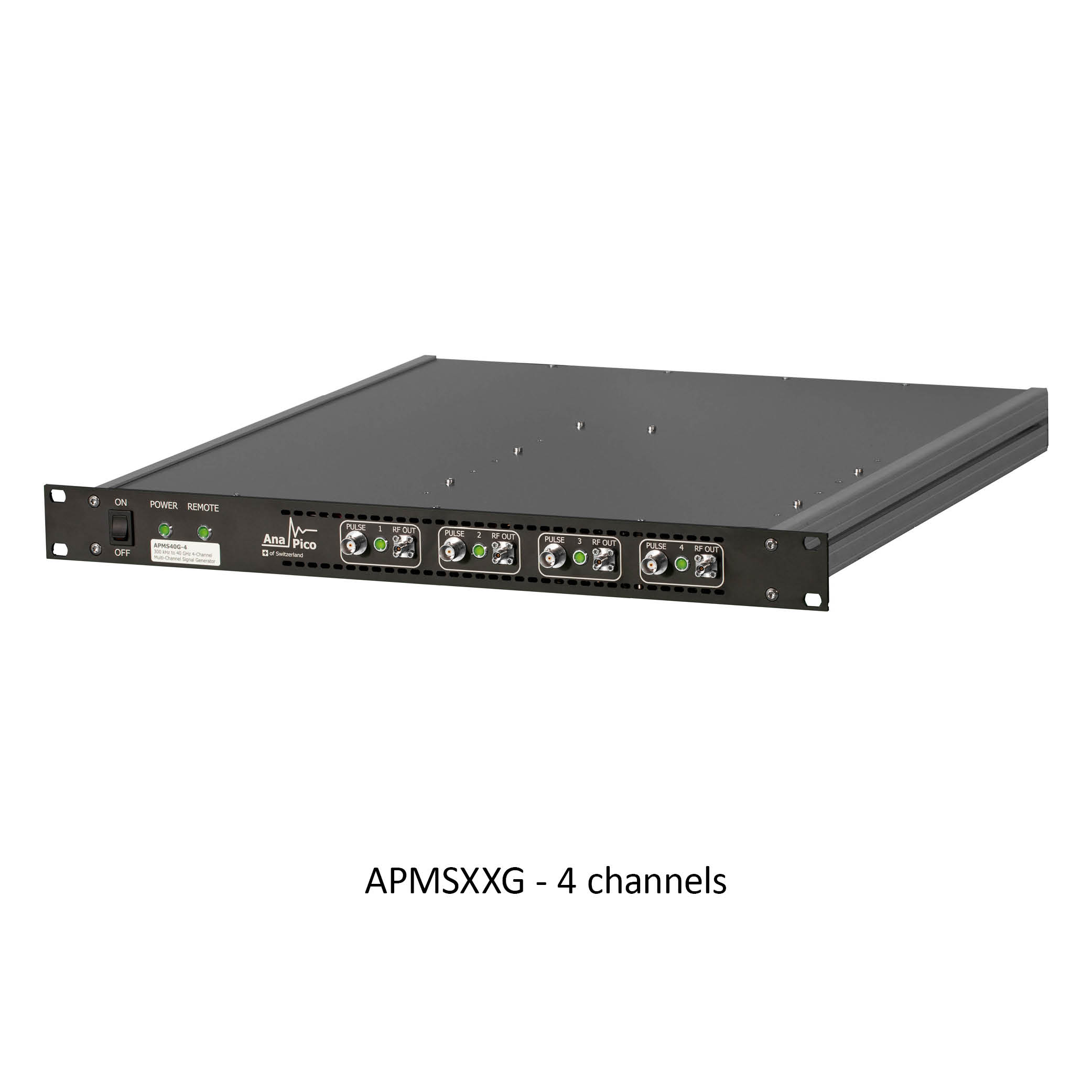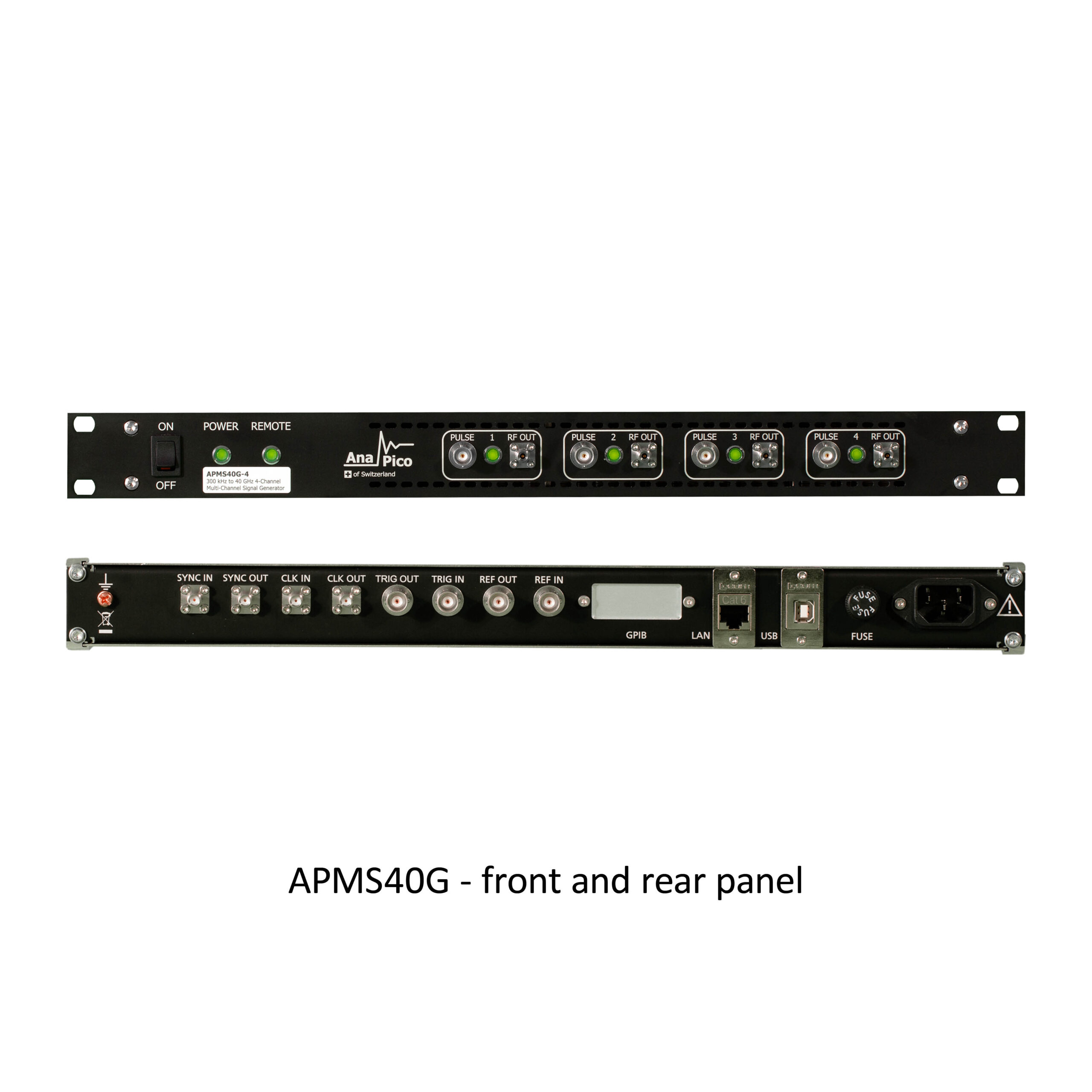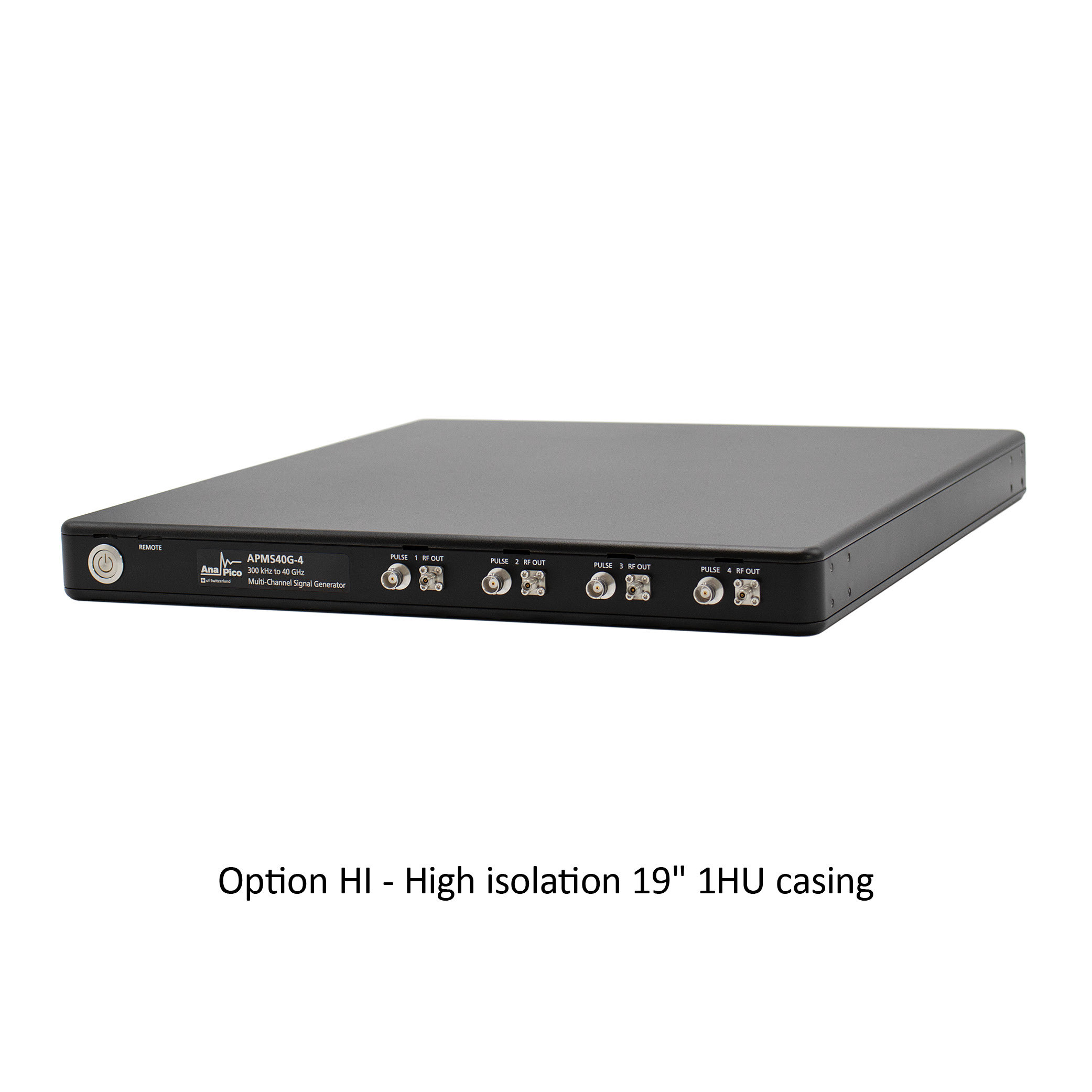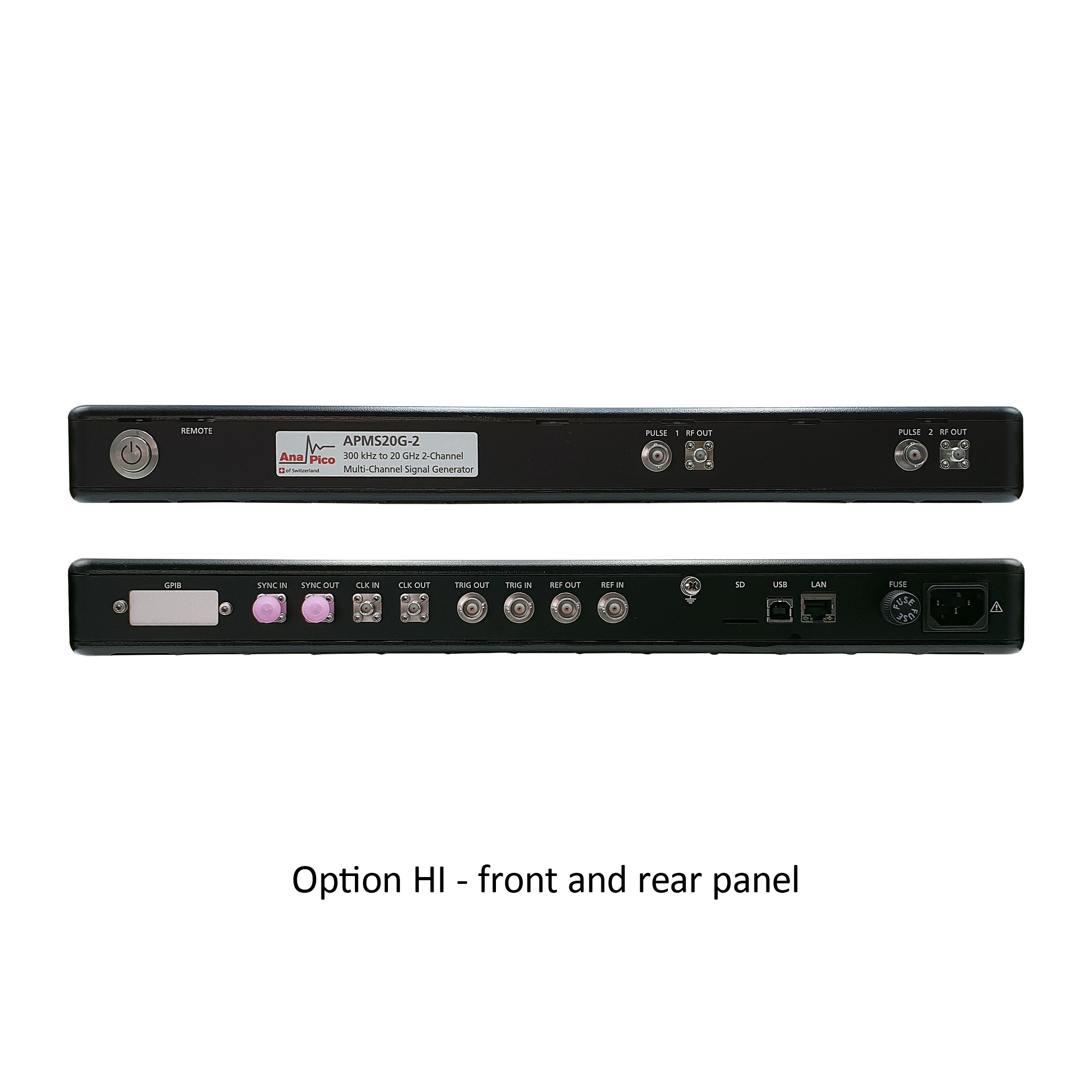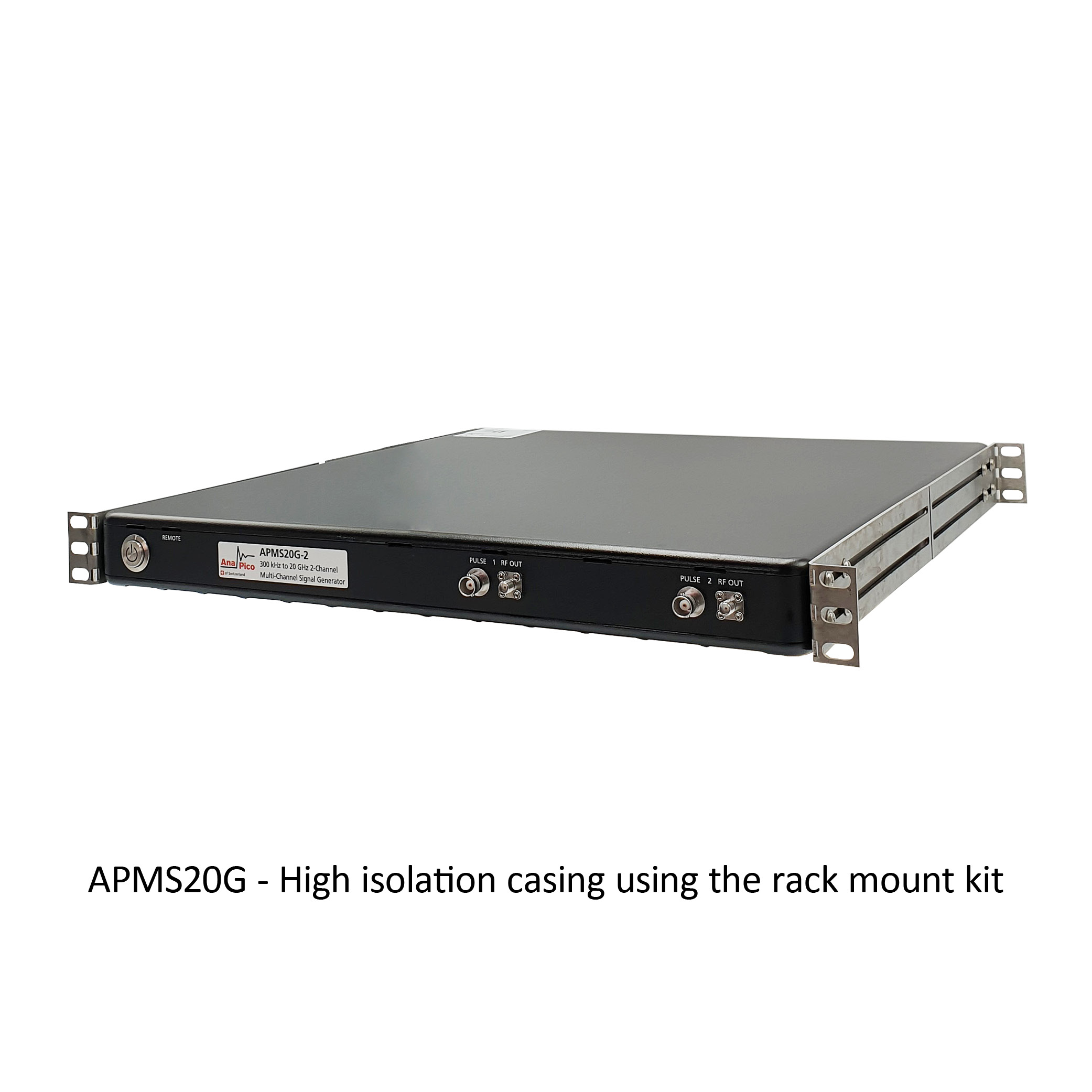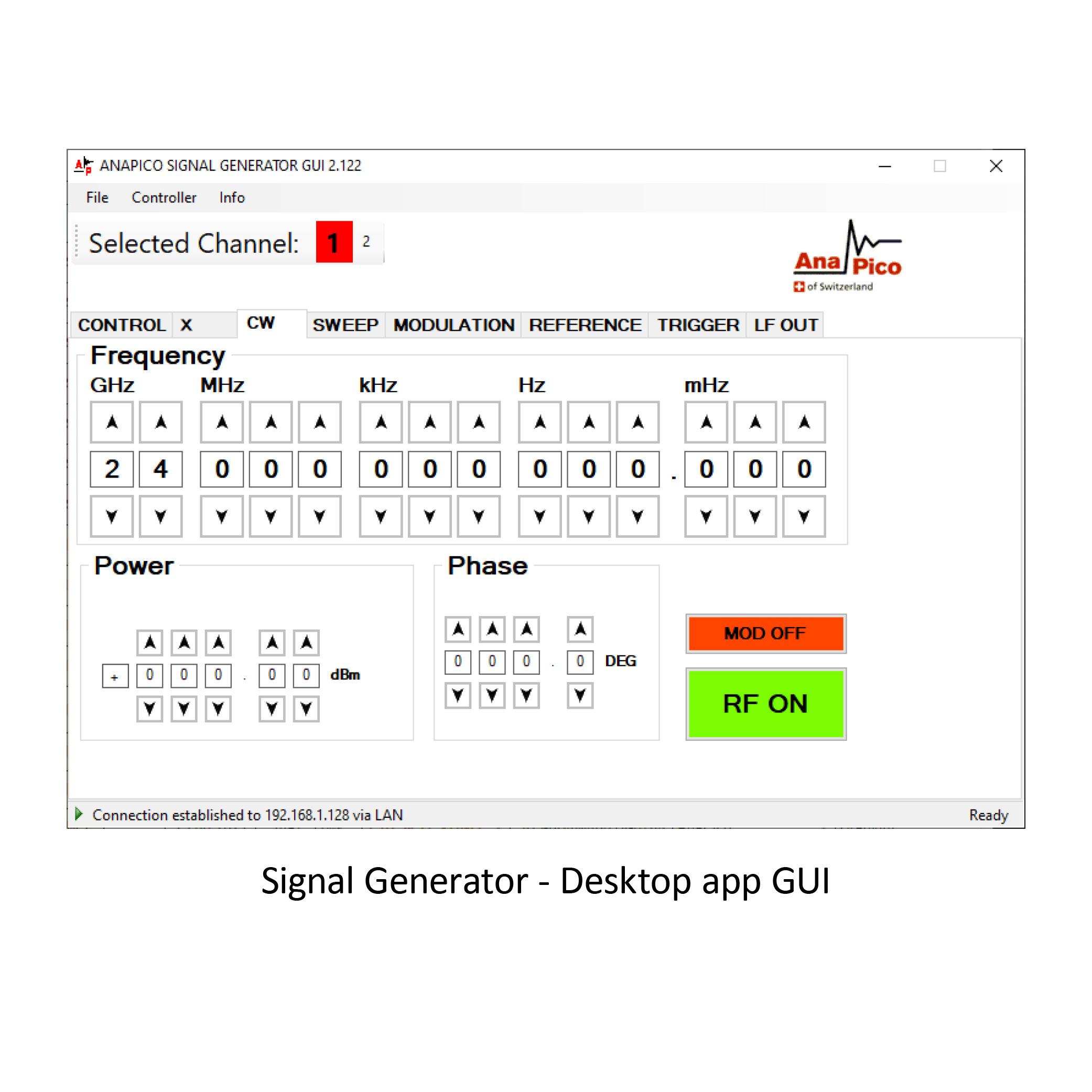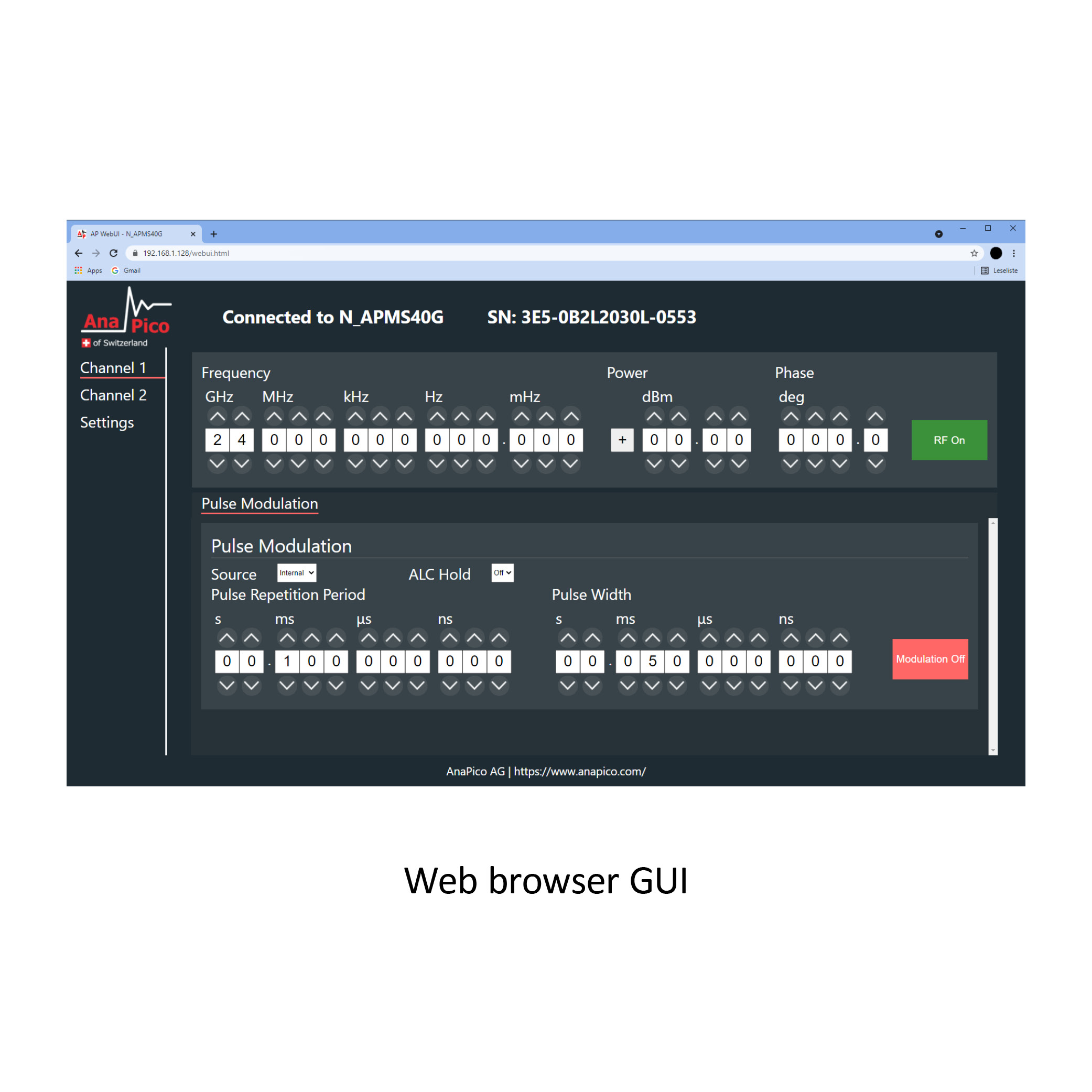The APMSXXG multi-channel signal generator series offers up to 4 phase-coherent, ultra-fast switching and very low phase noise signal sources in a single unit. The frequency ranges from 300 kHz to 6, 12, 20, 33 or 40 GHz. The output power ranges from -20 dBm to +25 dBm. Channels can be independently programmed in frequency, phase and amplitude. Pulse modulation capability is included on all units, while amplitude, frequency and phase modulation capability can be added optionally.
Excellent phase noise is combined with good spurious and harmonic rejection and a leading-edge switching speed of 25 μs with option FS. A high-stability OCXO reference provides excellent frequency accuracy and stability.
The generators accept external reference signals of 10 MHz, 100 MHz (optionally 1 to 250 MHz) and a higher frequency clock of 3 GHz allowing for outstanding phase stability and coherence between channels of different units. Option VREF, extends the external reference capability to accepting 1 MHz to 250 MHz signals.
The unique phase coherent switching option adds the following feature:
- Phase-coherent switching – The phase relationship between 2 channels is deterministic
- Phase memory – After a channel switches back to a previous frequency, it behaves as if it had been continuously running at that frequency.
The APMS series is ideally suited for a wide range of applications where good signal quality, accurate signal level and wide output power range are required. It has proven track record in fields such as quantum computing (QuBit manipulation and control), radar signal generation and satellite load testing.
The APMS generators come in a standard 19“ 1U enclosure and offer USB and Ethernet control interfaces as well as the optional GPIB interface. Each interface allows for easy and fast communication using the SCPI 1999 command set. Remote control of the instrument can be quickly attained from any host system. A customer-supplied application programming interface (API) and programming examples for Matlab, Labview, C++ and other commercially available tools make test implementation very straightforward.

